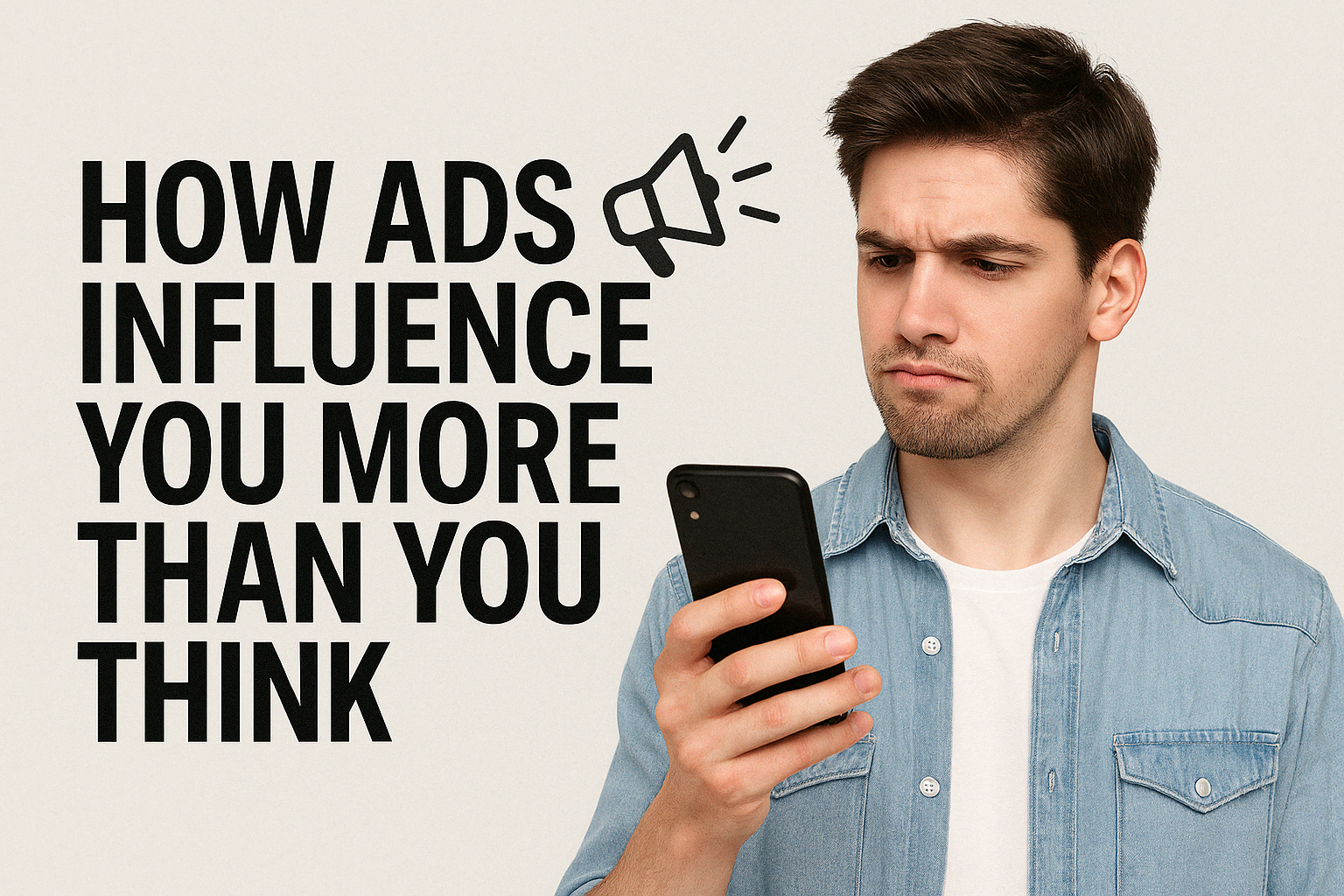The Power You Don’t Realize
You walk into a store for toothpaste and walk out with a new face wash, a protein bar, and a scented candle you never planned to buy. Or maybe you’re scrolling online, and an ad catches your eye — suddenly, you feel like you need those noise-canceling headphones, even though your current ones work just fine.
This isn’t accidental. It’s marketing — and it’s working exactly as designed.
Marketing isn’t just about spreading information. It’s about shaping perception, emotion, and desire. It makes you feel like a product is not just useful, but essential. And it does this through a mix of emotional appeal, repetition, scarcity, identity, and social proof — powerful tools that tap into psychology more than logic.
You might believe your choices are entirely your own, but modern advertising is designed to influence you — subtly, repeatedly, and often without your full awareness.
In this article, we’ll break down how ads bypass critical thinking, connect to your emotions, and guide your decisions — not just to buy, but to believe. Because in a world of polished messaging and personalized targeting, understanding the influence is the first step toward making conscious choices.
Emotional Triggers: Selling Feelings, Not Products
Walk through any commercial or social media ad, and you’ll notice something: brands rarely talk about the product itself. Instead, they sell you a feeling.
Perfume ads aren’t about scent — they’re about attraction, mystery, and desire. Car commercials don’t focus on engine specs — they show you power, status, and the freedom of an open road. Food ads? They’re not just about taste — they evoke comfort, home, and nostalgia.
This is emotional marketing in action. It works because emotions override logic. When an ad makes you feel something — joy, excitement, belonging — your brain starts to associate that feeling with the product. Even if you don’t need it, you start believing you want it.
That’s why brands don’t sell shampoo — they sell self-worth, transformation, or romance. They don’t just market a phone — they market the feeling of being modern, efficient, and connected.
These emotional associations are powerful because they tap into aspirations, insecurities, and desires. They bypass the question “Is this practical?” and replace it with “How will this make me feel?”
By the time you’re at the checkout or clicking “Buy Now,” the product isn’t just a product — it’s a promise of an emotional experience. And that’s exactly how marketers want it.
The Psychology of Persuasion
Behind every well-crafted ad lies a set of persuasion techniques — many of which are rooted in psychology. Dr. Robert Cialdini, a leading expert in influence, outlined key principles that marketers use to shape decisions — and they work even when we know about them.
One is reciprocity. You receive a free sample, a discount code, or a “free trial,” and suddenly, you feel a subtle obligation to give something back — usually by making a purchase. It feels polite, fair — and entirely unforced.
Then there’s scarcity. Ads that scream “limited edition,” “only 3 left in stock,” or “offer ends tonight” trigger urgency. When something feels rare, it feels more valuable — and we act quickly to avoid missing out.
Authority is another lever — using experts, celebrities, or “doctors recommend” claims to lend trust. Even when we know the person is just a paid spokesperson, their status makes the message more believable.
And of course, there’s social proof. If a product has thousands of 5-star reviews, if influencers are using it, or if “everyone’s buying it,” you’re far more likely to believe it’s worth trying.
These tactics don’t trick you — they nudge you, gently guiding your decisions by tapping into human instincts. The scary part? They often work even when you think you’re immune.
Creating Needs You Didn’t Have
One of the most powerful tools in marketing isn’t just convincing you to buy — it’s convincing you that you have a problem you didn’t even know existed. From skincare to tech gadgets to fitness gear, advertisers are experts at turning minor inconveniences into must-fix flaws.
Suddenly, your perfectly functioning phone feels outdated because a new version has a slightly better camera. You never worried about under-eye darkness until you saw a “solution” for it. The message is subtle but clear: You’re missing out. You’re behind. You’re not enough… unless you buy this.
This strategy works by creating a gap — between where you are and where you could be. And the product becomes the bridge to cross that gap.
It often leads to a cycle of chasing upgrades and fixes — believing that the next purchase will complete or improve you. But the bar keeps moving.
The most dangerous part is that these “needs” feel real. They tap into fear, comparison, and FOMO — Fear of Missing Out. But most of these problems were manufactured, not discovered. The more we buy into them, the more disconnected we become from what we actually need.
Identity and Belonging: How Ads Sell You… You
Modern marketing has evolved from selling products to selling personal identities. It’s no longer just “buy this because it works” — it’s “buy this because this is who you are.”
Brands today don’t just market to your tastes — they market to your values, beliefs, and aspirations. Whether it’s eco-conscious packaging, gender-neutral fashion, or minimalist tech, they reflect a version of you that you want to be seen as.
This is especially visible in lifestyle branding. When you wear Nike, you’re not just wearing shoes — you’re embodying grit, determination, and the “Just Do It” mindset. Apple doesn’t just sell devices — it sells innovation, creativity, and elegance. These products aren’t just tools; they become symbols of belonging to a particular mindset or tribe.
Social media deepens this effect. Ads are tailored to your likes, searches, and online behavior — turning your own digital footprint into a custom persuasion plan. You’re shown what people like you are buying, doing, or wearing. It’s not about standing out anymore — it’s about fitting in with a brand-driven version of yourself.
This form of influence is subtle, but potent. You’re not just buying a product. You’re buying affirmation. Belonging. A reflection of who you think you are — or who you want to become.
Awareness is Your Best Defense
Advertising isn’t inherently manipulative — but its power lies in how deeply it understands human behavior. It doesn’t just sell things. It shapes desire, often without our awareness.
In a world overflowing with targeted content, pop-up ads, and influencer endorsements, the line between personal choice and external influence gets blurry. That’s why awareness is your best defense.
Before the next impulse buy, pause and ask: Do I want this — or was I made to want it?
Marketing thrives on invisibility. But once you see it, you can choose more clearly. You don’t need to reject ads — just don’t let them think for you.
The more aware you are of influence, the freer you are to choose.



